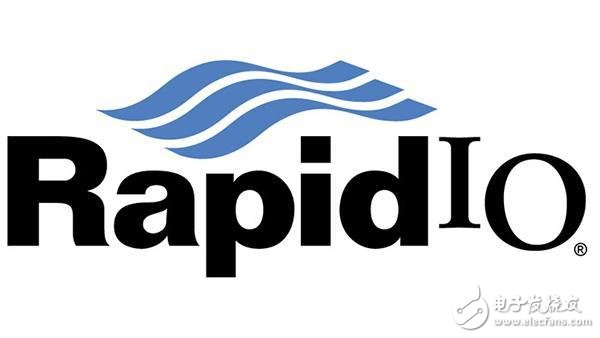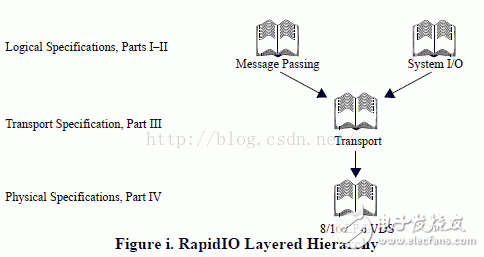**1.1 Introduction**
RapidIO is a packet-switched interconnect protocol primarily used as an internal system interface, such as for communication between chips or boards, and it can operate at speeds in the range of gigabits per second. It is commonly used to connect processors, memory, and memory-mapped I/O devices, which may include network components, memory subsystems, or general-purpose computing elements.

The RapidIO interconnect is designed as a distributed memory system that supports multiple independent devices. These devices use Direct Memory Access (DMA) to transfer data and maintain consistency by exchanging information back and forth.

RapidIO defines a system interconnection standard. Concepts such as processor programming models, cache behavior, system reset, and interrupt handling are outside the scope of the RapidIO architecture. However, these features can be implemented using the resources available within the RapidIO network. For example, the architecture provides the necessary operations to support different processor models, ranging from strict memory ordering to weak ordering. Any references to these aspects in the specification are for illustrative purposes only, and future versions may expand on them.
Although the current RapidIO specification is based on distributed memory systems, future versions will extend its capabilities to handle new topics such as serial physical layers, global shared memory, and interoperability. These enhancements will be defined independently within the specification.
RapidIO uses a three-layer architecture: the logical layer, the transport layer, and the physical layer.
1. **Logical Layer**: This layer defines the protocols and transaction formats required by endpoints. It is not tied to any specific transport or physical interface, and it specifies the bitstream format. The logic layer adds necessary bits to the lower layers. Because applications use different programming models, the RapidIO structure is divided into sub-protocols to support them. Current logical layer protocols include:
- System I/O Protocol Specification
- Messaging Protocol Specification
- Additional logical layer protocol specifications under different packages
2. **Transport Layer**: This layer describes how packets are routed from one endpoint to another. It serves as the common part of the RapidIO architecture.
3. **Physical Layer**: This layer defines the interface between two devices, including packet transmission mechanisms, flow control, and electrical performance parameters.
**1.2 RapidIO Feature Set**
The feature set and protocols of RapidIO are tailored for general-purpose computing and embedded applications. Each layer's characteristics can be categorized into functional, physical, and performance aspects.
**1.2.1 Logical Layer Features**
When a large amount of non-correlated data is encapsulated in a single packet, message transfer and DMA can significantly improve interconnect efficiency. Therefore, the RapidIO packet format supports variable packet sizes, as the messaging model is inherently non-correlated. In a RapidIO device, certain parts of the memory space can only be accessed directly by a processor or a local device that controls the messaging interface.
The header is minimized to reduce overhead and speed up packaging, disassembling, and processing. As the data payload increases, the efficiency of the packet also improves. RapidIO supports payloads up to 256 bytes. Messages are crucial for embedded control applications, so support for large data domains and multi-packet messages is essential.
Concurrent transmissions allow multiple transactions to occur simultaneously, enabling pipelining on a single device and time-sharing between multiple devices. Without this, much of the system bandwidth would go unused.
**1.2.1.1 Functional Characteristics**
Many embedded systems are multiprocessor-based rather than multiprocessing. To support distributed I/O and processing needs—especially in networking and routing markets—messaging or software-coherent programming models are more effective than traditional global shared memory models. RapidIO supports all of these.
It ensures compatibility across both large and small systems, using the same package format to accommodate future growth. Read-modify-write atomic operations are vital for synchronization between processors or other system components.
RapidIO supports 50–60-bit addresses, with 34-bit local addressing for smaller systems. When non-correlated data is packed into a message, message transfer and DMA enhance interconnect efficiency. The messaging model is essentially non-shared memory, so some memory regions can only be accessed directly by a local processor or device. A remote device must go through a local device to access such areas.
**1.2.1.2 Physical Characteristics**
The RapidIO packet format is independent of the physical interface width. The protocol and packet formats are also independent of the physical interconnect structure, such as point-to-point links, buses, switched networks, or dual serial connections.
RapidIO does not depend on the bandwidth or latency of the physical architecture. It supports out-of-order packet processing and transmission. Geographic addressing is not required, as device identities are independent of their location. Bandwidth and latency requirements for certain devices should not be restricted when designing a system.
**1.2.1.3 Performance Characteristics**
For web applications, messages are important, so supporting variable-sized data fields and multi-packet messages increases efficiency. Minimizing the header reduces control overhead, making packaging and disassembly more efficient. Multiple transactions enable concurrency, preventing wasted system performance.
**1.2.2 Transport Layer Characteristics**
**1.2.2.1 Functional Characteristics**
System sizes vary, but all use the same or compatible package format. Since RapidIO has a single transport protocol, compatibility between implementations is assumed. The protocol is flexible and adaptable for future applications. Each packet is always assumed to come from a source to a destination.
**1.2.2.2 Physical Characteristics**
The transport layer is independent of the physical interface width. Geographic addressing is not required, and device identities remain independent of their location.
**1.2.2.3 Performance Characteristics**
Minimizing the header reduces overhead, improving efficiency. Broadcast and multicast can be achieved by interpreting the network structure.
**1.2.3 Physical Layer Characteristics**
**1.2.3.1 Functional Characteristics**
RapidIO includes flow control between communicating devices, as no device can buffer unlimited data.
**1.2.3.2 Physical Characteristics**
Connections can be point-to-point, one-in-one-out, 8-bit, or 16-bit. The physical layer protocol is somewhat independent of the interconnect topology, though it assumes a chain-like structure. It is not dependent on bandwidth or delay. The physical layer handles both ordered and unordered packet transmission and reception. It is tolerant of transient errors caused by high-frequency operation or noise.
**1.2.3.3 Performance Characteristics**
The physical protocol allows for minimum to maximum data compliance. Headers are kept as small as possible to reduce control costs and improve efficiency. Concurrent transactions prevent performance waste. Electrical characteristics support the highest possible speed for future scalability.
Automotive Diagnostic Connectors And Cables
We make OBD connector with terminal by ourselves, soldering type and crimping type are both available. Such as 16pin obd connector. OBD1, OB2, J1939, J1708, J1962, etc. Also molded by different type, straight type or right-angle type. The OBD connector cables used for Audi, Honda, Toyota, BWM, etc. We have wide range of materials source , also we can support customers to make a customized one to replace the original ones.
Automotive Diagnostic Connectors And Cables,Obd Connectors,Reliable OBD Connector,Black OBD Connector,OBD Diagnostic Cable,OBD2 Connectors
ETOP WIREHARNESS LIMITED , https://www.etopwireharness.com